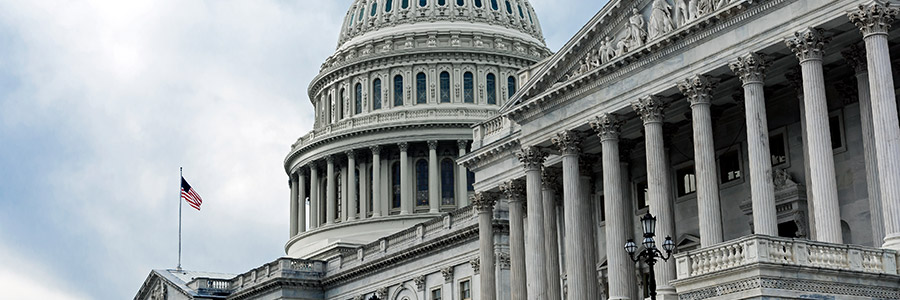China Economic Road Ahead: Clear as Mud
By: Alex Loo
Oct. 05, 2023 - 6 minutes
Peak Pessimism
As seen in recent better-than-expected economic data, China's economic growth engine is firing up again. Retail sales handily beat expectations in August, while industrial production growth edged higher as well. More importantly, credit extension from banks to households and firms has recovered, quelling concerns that firms & households are shying away from credit. Trade, on the other hand, a driver of growth during the lockdowns last year, remained under pressure in August as the global manufacturing sector stalls.
Recent data outturns suggest that the recent policy tweaks in both monetary policy and in the property sector have stabilised economic activity, after the slump in Q2 and in July. However, the lack of broader fiscal stimulus raises doubt on the sustainability of this improvement, and the economy could turn south again in short order if the property sector fails to improve and the slowdown in the global economy turns more severe.
Policy support measures thus far (listed below) have failed to convince investors that the authorities are taking decisive action to boost growth. This has been reflected via a weaker yuan and capital outflows as a streak of disappointing data heightened bearish sentiment on China's economy. Nevertheless, officials did ramp up their efforts to prop up capital markets after the heavy outflows by tweaking the fastest levers (i.e., monetary and property policies), and addressed hidden local government debt financing vehicle problems through debt swaps.
Timeline of Policy Support Announcements since July 2023 Politburo
- July 31: NORD publishes a wide-ranging policy document, focusing on removing government restrictions on consumption such as car purchase limits, improving infrastructure and holding promotional events
- August 2: PBoC vows to reduce interest rate and downpayment for new mortgage and lower existing mortgage interest rate
- August 2: China tells local government to sell all new special bonds by end of Q3
- August 2: Tax-exemption to SMEs/preferential income tax for VCs/startups
- August 4: PBoC vows funding support for the private sector
- August 10: China lifts ban on group tours to U.S. and other countries in boost to global travel Industry
- August 11: China allows provincial-level governments to sell U$139B in bonds to repay LGFV debt
- August 15: Cut 1Y MLF by 15bps to 2.5% and 7D RR Rate by 10bps to 1.8%
- August 21: 1Y LPR lowered by 10bps, 5Y LPR unchanged.
- August 25: China rolls out major mortgage easing for homebuyer support
- August 27: China cuts stamp duty, increases margin financing to boost equity market
- September 14: China cuts banks' RRR by 25bps for 2nd time this year
From the lack of action on the fiscal front, our main takeaway is that authorities are steering away from a focus on growth targets and toward addressing the structural problems in the economy (e.g., leverage, property sector). Consequently, we now re-assess our view of Chinese fiscal stimulus (we had earlier expected a sizeable fiscal package) and look instead for authorities to provide only an extra CY500B in special local government bond quotas this year.
Authorities are likely cognizant that the absence of strong fiscal inputs implies GDP growth this year and next could be below its historical average but appear unfazed. Perhaps policymakers are shedding their singular growth pursuit mindset and instead prioritising economic reforms to ensure long-term sustainable economic growth after the ensuing debt problems from legacy economic policies. As such, we expect GDP growth for 2023 to be 4.8% (below the official growth target of 5%), though the big uncertainty is on our 2024 growth projection of 4.4%. Our forecasts are a touch below the Bloomberg consensus of 5.1% for 2023 and 4.5% for 2024 as most analysts agree that the lack of clear fiscal support is a headwind to economic growth next year.
As we approach year-end, the window is narrowing to put stimulus to work to jumpstart the economy, while the poor economic performance in Q2 and July argues that officials can't step back from policy support. To meet our GDP growth forecasts, we expect the following from China officials:
- One RRR cut in Q4 and one LPR cut in Q4
- Central Government tops up special local government bond quotas by CY500B
- Officials put budgeted funds to work more quickly after the lagged fiscal implementation thus far, and fiscal drag turns into a driver. There is room for CY4.4T in spending to be put to work between August to December this year.
A Bet That Rollback in Property Restrictions Will Suffice
Policymakers are betting that a loosening in property sector restrictions (e.g., broadening the definition of first-home mortgages) will have powerful ramifications for the economy through the housing and consumption channels. Unquestionably, the rollback in restrictions in Tier 1 cities by local officials such as Guangzhou, Beijing and Shanghai were more aggressive than most expected initially. This sent a strong signal to local officials in other Tier 2/3 cities to cut restrictions, as the central government appears willing to stomach increased property-market speculation now to anchor sales.
At a national level, the PBoC and the National Administration of Financial Regulation allowed borrowers to negotiate a lower mortgage rate for existing first-home mortgage loans. The rate cut to existing mortgage loans should boost consumption to a certain extent as borrowers on average may register a ~80bps reduction in the loan rate. The total annual interest payment savings may amount to CY200B/year, around 0.5% of total annual retail sales.
Tight Fiscal Balance to Dissipate? More "Forceful" Monetary Easing?
Fiscal policy drag has also likely compounded China's poor economic performance on top of the weakness in the property sector and downbeat sentiment. By our estimates, China's fiscal stance is tighter by almost 2% in the first 7 months of 2023: the fiscal deficit stands at -2.3% of GDP YTD (as of July 2023) in contrast to -4.3% of GDP over the same period last year.
On the monetary policy front, we expect one more RRR cut in Q4 to free up cash from banks for onshore investors to absorb the upcoming special local government bond issuance. The new PBoC Governor Pan also appears decisive in supporting the economy through monetary easing, following closely to the guidance at the July Politburo meeting, and we expect one more LPR cut in Q4.
Even as the economy recovers, it is likely to be a gradual one fraught with headwinds due to the beleaguered property sector situation and the slowdown in the global economy. Major Chinese developers are still plagued by financial troubles, fighting to avoid bond defaults while developers' financing has failed to register any marked improvement. Factoring in our nowcast estimate of Q3 GDP of 4.5% y/y, we now expect 2023 GDP growth to be 4.8%, though the big uncertainty is on 2024 growth of 4.4% given the lack of fiscal support to date.
In summary, if upcoming economic data (especially retail sales and property sales) still disappoint authorities' expectations, we expect the Chinese leadership to have a lengthy discussion on the pulse of the economy. This could take place at the upcoming 3rd Plenum of the 20th Central Committee which could be held as soon as next month and typically lays out the key planned economic reforms for the next five years.
Subscribing clients can access full reports including China Economic Road Ahead: Clear as Mud on the TD Securities Market Alpha Portal





